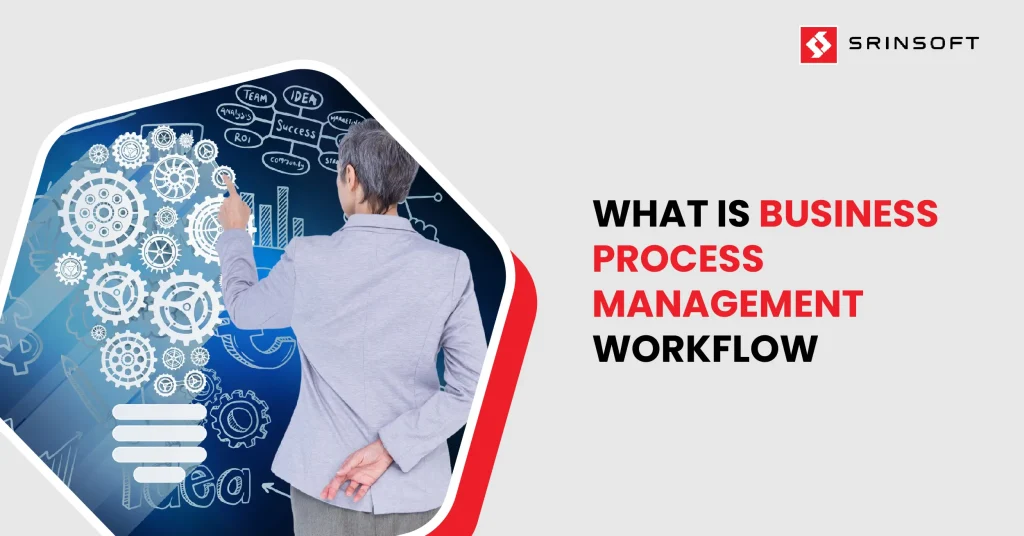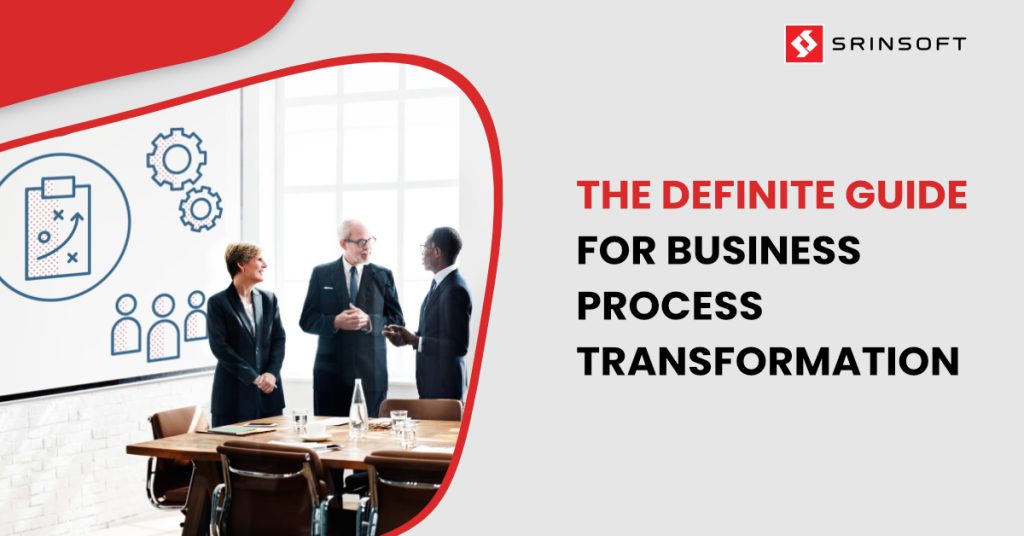
Table of Contents
ToggleIntroduction
Business process management (BPM) involves not only re-imagining and executing the tasks more effectively. It is essential for any organization that seeks to improve efficiency, flexibility and overall performance. A cornerstone of this strategy is the use of BPM in workflows as a detailed roadmap for completing specific tasks or processes under the larger umbrella of BPM.
BPM workflows represent the step-by-step sequence of activities required to complete a task or process. They outline every step of the process, detailing what needs to be done by whom and in which order. From approving a purchase order to addressing customer support requests or processing an invoice, BPM workflows guide tasks naturally along well-defined paths.
Difference between Workflows With and Without BPM
Understanding the distinction between workflows with and without the backing of BPM is crucial for organizations looking to optimize their operations.
| Traditional Workflows | Workflows with BPM |
| A workflow is a well-defined sequence of tasks, where each task is performed by specific users or systems. |
BPM encompasses end-to-end visibility over a multi-stepped business transaction. |
| Workflow is primarily concerned with organizing and optimizing tasks. Workflow focuses on specific activities rather than the broader process. | BPM manages the flow of tasks, data, and information across different departments, systems, and functional units to achieve organizational goals. |
| Workflows are generally single activities that combine to form an overall, larger process. | Unlike workflows, which focus on individual tasks, BPM encompasses entire processes that may involve single or multiple workflows. |
| Workflow automation tools are geared towards effectively administering the steps, by systematically transitioning items from one stage to another. | BPM tools not only manage workflows but also include capabilities for data collection using APIs, reporting, and analytics. |
| The primary goal of a workflow is to complete a specific item or task efficiently, minimizing time and errors. | BPM extends from aligning processes to business objectives, resource utilization and meeting customer expectations. |
Role of BPM in Handling Workflows
BPM is a broader way to manage workflows from a strategic perspective. It integrates several workflows and connects them to make sure they are harmonious with the business goal.
With BPM, the customer order workflow can be linked to other processes such as inventory management to update stock levels, logistics to arrange delivery, and customer service to notify customers of their order status.
BPM also plays a critical role in automating workflows, reducing manual interventions, and speeding up processes. BPM aims to reduce error, maintain consistency in performance and drive employees towards more strategic tasks by automation of repetitive tasks.
It addresses everything from the most fundamental steps in streamlining business processes to reducing redundancies and enhancing deliverables.
In essence, each workflow acts as a building block within the larger framework of BPM. That is because workflow management software deals with the automation of tasks themselves, whilst BPM integrates it all together to boost the performance and effectiveness of work across different departments.
It takes a more wholesome approach to streamline business processes, avoid duplications and improve deliverables.
Start optimizing your workflows today—contact us
Common Challenges with Traditional Workflows
BPM is designed to simplify and improve your operations, but traditional workflows come with their own set of challenges. Organizations need to focus on addressing these impediments especially when modernizing their BPM strategies and to make the most out of it. Following are some of the challenges with workflows in the absence of BPM.
Complexity in Process Design
The most significant challenge with workflows is to create and map out processes which can be very complex. Conventionally, each task in a process must be documented granularly along with the roles and responsibilities.
Depending on the size of a company’s industry and how many processes are interdependent, this can be an extremely laborious and resource-intensive task. This complexity, in turn, results in processes that are difficult to manage and adapt as business needs evolve.
Lack of Flexibility
These traditional workflows are most times very rigid and inflexible, built around certain predetermined processes.
This can pose a challenge to an organization operating in rapidly changing business environments, where processes must continually be adapted as regulations change or market demands evolve.
Without the ability to rapidly adjust workflows, a great deal of re-engineering is needed which results in efficiency losses and slows down an organization’s responsiveness.
Limited Integration with Modern Tools
Traditional systems find it difficult to integrate with modern tools and technologies (like cloud-based applications, AI, and big data analytics).
When integration is lacking, this can lead to siloed processes where data and workflows are disconnected among different departments or systems.
The downside is that lack of integration makes real-time flow of data and collaboration across functions difficult to achieve for modern businesses.
High Implementation and Maintenance Costs
Traditional workflows can be costly to implement and maintain. The initial setup often involves significant investment in software, hardware, and consulting services.
Furthermore, ongoing maintenance and updates are expensive. This is especially true if the organization has a reliance on custom-built solutions or legacy systems.
For smaller organizations or those with tight budgets, such high costs can be an impassable barrier.
User Resistance and Adoption Issues
People within companies new to traditional workflows might feel they are cumbersome and disrupters of existing work routines. User resistance can also be compounded by a lack of training or poor change management techniques.
If employees don’t fully understand the benefits of business process management workflows and even find them difficult to use, adoption rates may be low which will reduce the overall effectiveness of the BPM initiative.
Manual Interventions and Error-Prone Processes
In typical workflows, many tasks are executed manually which can lead to errors and delays. Due to manual interventions, any such task is susceptible to error and unless automated they might not be handled properly.
This not only creates an inefficient process but could result in compliance risks and unhappy customers if time-sensitive tasks are not completed accurately or on time.
Business Process Management Tools
BPM tools are software components that assist companies in transforming their manually-driven business processes into automated workflows. BPM tools offer a wide spectrum of features that cater to all phases in the business process life cycle.
Organizations can benefit greatly by incorporating BPM tools –
Standardization: BPM tools keep business processes across the organization standardized and they guarantee compliance with industry standards and regulations.
Efficiency: BPM tools reduce manual interventions and allow automation of repetitive tasks. These make it easy to improve operational efficiency.
Scalability: These tools are versatile and you will be able to scale & adjust your process as the business grows.
Visibility and Control: BPM tools offer better insight into process performance so that there can be better control and management over business processes.
Gen AI in BPM: Gen AI in BPM tools leverage advanced automation and AI. With preconfigured blueprints and modular design, it automates AI model creation and real-time decision-making within the BPM, empowering organizations to enhance efficiency, personalize customer experiences, and drive strategic insights.
Popular BPM tools like Pega, Creatio, Appian, and IBM BPM are transforming the way organizations handle workflows. These tools are equipped With AI and analytics to not only automate the processes but also provide predictive capabilities.
Pega is especially revered in automating complicated workflows and supporting dynamic case management, whereas Creatio has built a name around its low-code platform allowing businesses to seamlessly customize and adapt workflows on the fly.
The selection of a suitable BPM tool for your company is an important step towards streamlining operations. There are certain key factors to consider along with some best practices while deciding on an appropriate tool.
In addition to choosing the right tool, BPM tools must be implemented with systematic steps so that the processes are clear and aligned well with the organizational goals.
Ready to transform your business? Explore our BPM solutions today!
Conclusion
By implementing BPM in workflows, organizations can make their businesses more competitive through increased efficiency and optimised operations.
Incorporating BPM workflows provides an effective strategy to streamline work productivity, manage resources effectively and improve collaboration across different departments.
However, there are challenges and complexities with workflows which businesses must be aware of. Over and above, data security and compliance are paramount requirements in any of these workflows.
With a proactive approach to these challenges and through developing an adaptive culture, organizations can fully unlock the benefits of BPM while reducing risks.
FAQs
What is an automated workflow using BPM?
An automated workflow using BPM is a series of tasks managed by software to streamline and optimize business processes, reducing manual effort and increasing efficiency.
What is a case life cycle used in a BPM application?
A case life cycle in BPM defines the stages and milestones that a case (a specific process or transaction) goes through from initiation to completion, ensuring it follows a structured path.
What is BPM methodology?
BPM connects people, processes, technology, roles & responsibilities, business rules, and compliances for the common goals of adding value to the customers and the stakeholders.
How important is BPM?
BPM helps the entire organization construct solid frameworks for all its processes. All the important processes are documented, monitored, and optimized when processes function in full swing with very few hiccups and process efficiency increases


